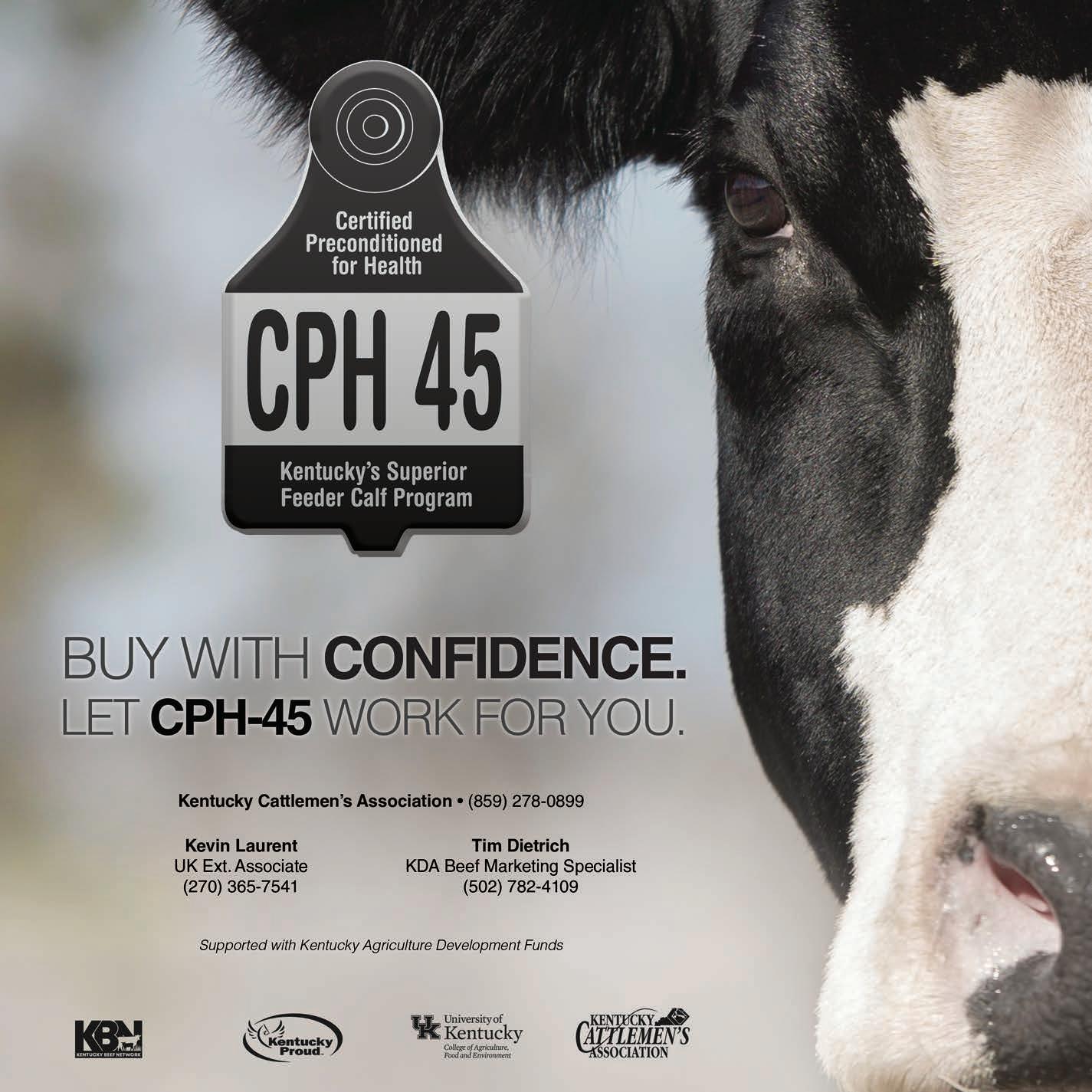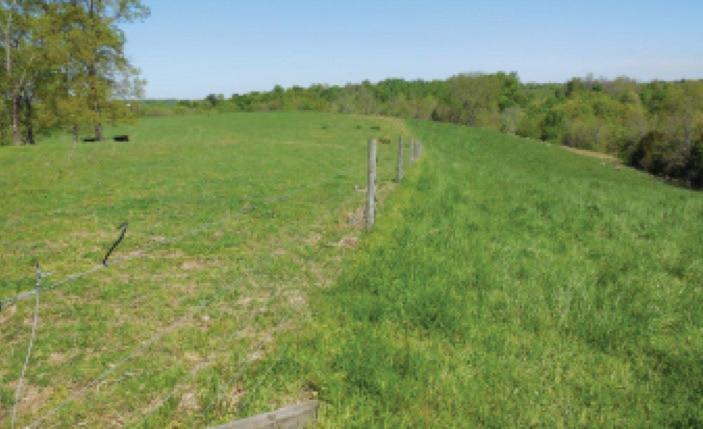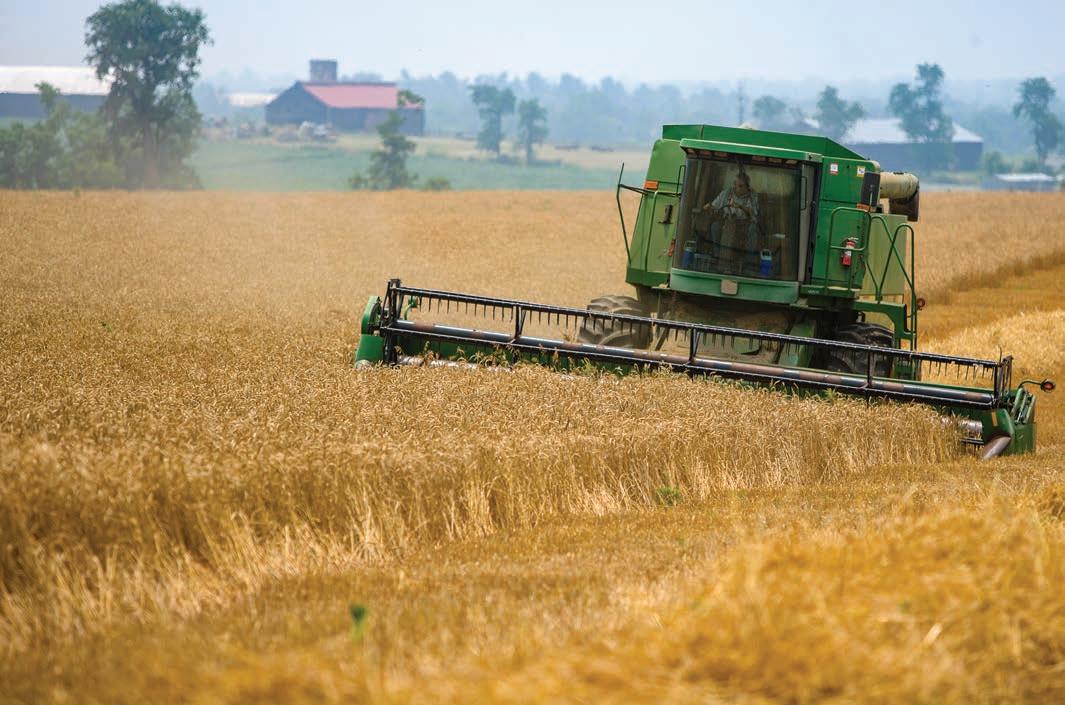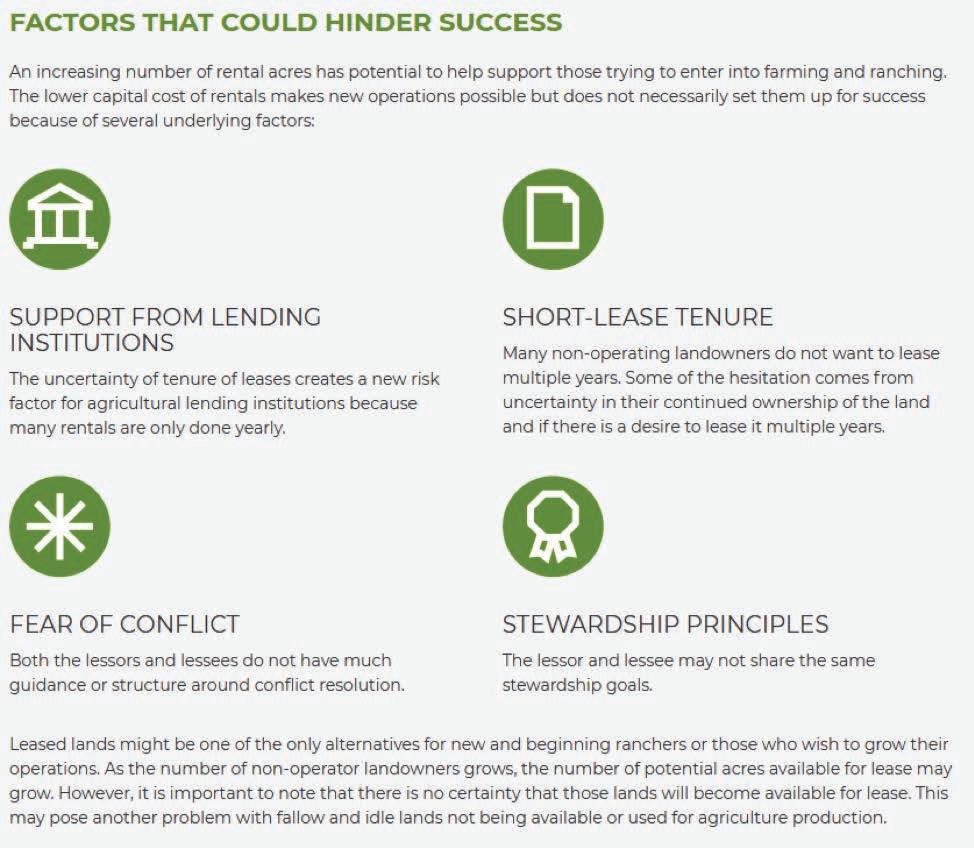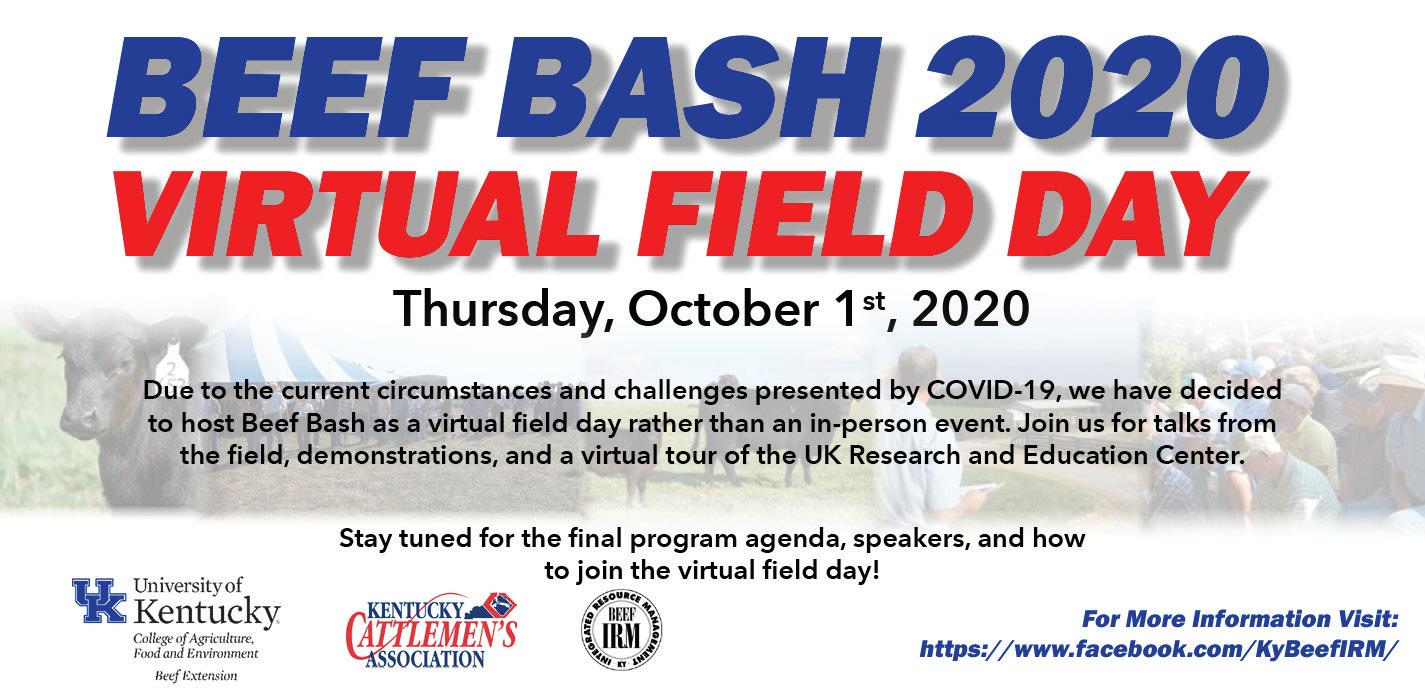
16 minute read
N utrient Synchrony: Protein and Energy Working Together
NUTRIENT SYNCHRONY: PROTEIN AND ENERGY WORKING TOGETHER
Caitlin Hebbert, Livestock Consultant, Noble Foundation
As a ruminant nutritionist and livestock consultant, I spend the vast majority of my time discussing the nutrient requirements of beef cattle. More specifically, discussing the “king” and “queen” of the beef nutrition world: protein and energy. Whether a producer is backgrounding calves, developing heifers or getting through the winter, these are the two nutrients that dominate conversation, concern and price tag. However, these nutrients are far too often considered separate entities. You usually know if you’re deficient in one or the other, or maybe both, but it’s rarely considered that these two work in synchrony as complements. Nutrient synchrony is the concept that pairing the availability and fates of different nutrient substrates can increase digestibility, utilization and/ or absorption of those nutrients. Synchronizing nutrients goes beyond meeting the textbook requirements of animals and considers nutrient compatibility. No nutrient acts alone; many are catalysts with enzymatic actions or antagonists for other nutrients. The thing to keep in mind is that source is key. Not all proteins are alike, nor are all carbohydrates or even mineral chelates alike. The protein in cottonseed meal is not the same protein that is in dried distillers grains, and they may interact differently with the carbohydrates in your forage source to yield different performance results. The secret is all in keeping the rumen microbes happy.
How Protein Affects Rumen Function
Generally speaking, dry matter intake of forage as a percent of body weight increases up until crude protein (CP) content reaches 8% of dry matter. Thus, if you are grazing cattle and the pasture forage CP falls below 8% dry matter, cattle will consume less forage, which is why cattle can lose condition so quickly during the winter even if they are springcalving and at their lowest nutrient requirements for the entire year. The same can be said for cattle on low quality hay at any time of year. They are not only consuming a less-nutrient-dense diet; they’re consuming less volume of said diet as well.
Why the decrease in intake, if more pounds of a less-nutrient-dense diet is needed to meet nutrient requirements? The answer lies within the microbes. When CP falls below the 8% threshold, the rumen microbes responsible for digesting forage feedstuffs cannot maintain adequate growth and functionality. The primary benefit to protein supplementation of grazing cattle on dormant pasture is that of greater digestibility rates due to increased rumen microbe efficiency, and therefore greater intake. When cattle are on poor quality forage and lacking the nutrients to keep the rumen healthy and active, digestibility slows and the rumen stays fuller longer, meaning less nutrients are consumed and absorbed. Just as protein is needed to adequately digest and utilize carbohydrates in feedstuff, carbohydrate content and source can increase digestibility and microbial efficiency, even those with relatively high protein content. Research Example: Steam-Flaked vs. Ground Corn to Supplement Wheat Pasture
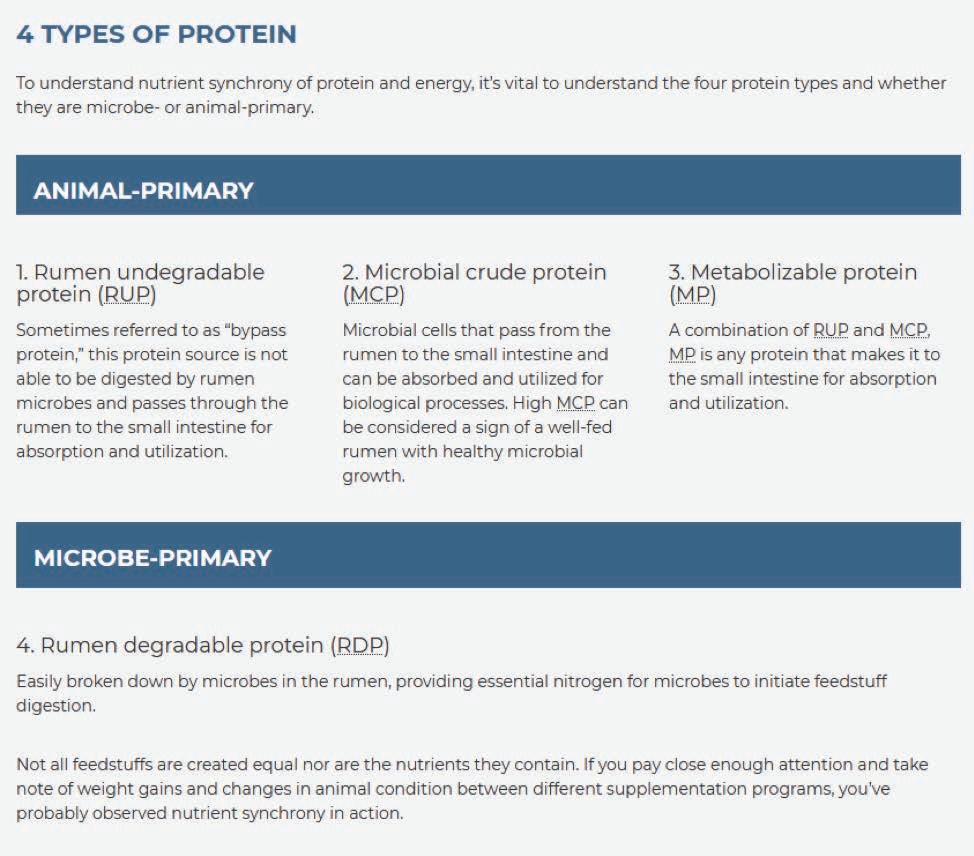
In a study conducted at New Mexico State University, the effect of supplementing cattle on wheat pasture with either steam-flaked corn or ground corn was evaluated. Wheat pasture is known to be extremely digestible and high in protein — a rapidly digested protein. The hypothesis was that supplementing such a rapidly fermentable protein with an equally available source of energy would increase the efficiency of rumen fermentation and, therefore, increase nutrient utilization and efficiency of forage. Steam-flaked corn is about 17% more energy-available than ground corn,

PINKIS FOR COTTON CANDY – NOT EYES... We got this
making it more rapidly fermentable and a more appropriate pairing for the protein in wheat forage. Cattle supplemented with the steam-flake versus ground corn consumed 19% more forage and were 15% more efficient in digesting the wheat pasture itself — an already highly digestible forage (Hebbert et al, 2016). Having both nutrients degraded and available simultaneously creates a more efficient microbial environment, meaning your cattle get more out of your feedstuff and you get more out of your investment.
Feed Microbes First
This is not to say you should delve into your feed program so deeply that you know the exact fermentation time of the nutrients in each feedstuff you consider — this is obviously not practical and, at this time, probably not completely achievable. What is important is to understand that when you’re feeding cattle, you’re feeding the microbes first and the animal secondly. Just like your vehicle needs both the correct and clean fuel and oil to run properly, the rumen microbes need the proper protein and carbohydrates (along with minerals and vitamins) in order to digest and utilize forageefficiently. The primary benefit ofsupplementation is often to increase microbial efficiency. Subsequent increased animal performance (whether that’s lactation, reproduction or growth) is a byproduct of that investment in the rumen health. When you feed protein to a deficient animal, they are not only making use of that protein, the protein is helping them to make better use ofthe other feedstuff available to them.
Keep the Rumen Factory Running
There are times to supplement protein to your cattle and times to supplement energy, all depending on the time of year, forage base and phase of production or class of animal. Just keep in mind that you’re always handling a multi-faceted system. There’s so much more going on behind the scenes than what meets the eye and changes to diet often have a cascade ofbiological effects. It may be helpful to have a different perspective when you read feed tags and consider supplementation types and sources. The purpose of supplementation is not just to meet one nutrient deficiency, it is to keep the whole rumen factory working and using every nutrient, and every penny you invest into those nutrients, as efficientlyas possible. Pink Eye (conjunctivitis) Corneal ulcers and lesions Eyelid inflammation Money-back guarantee
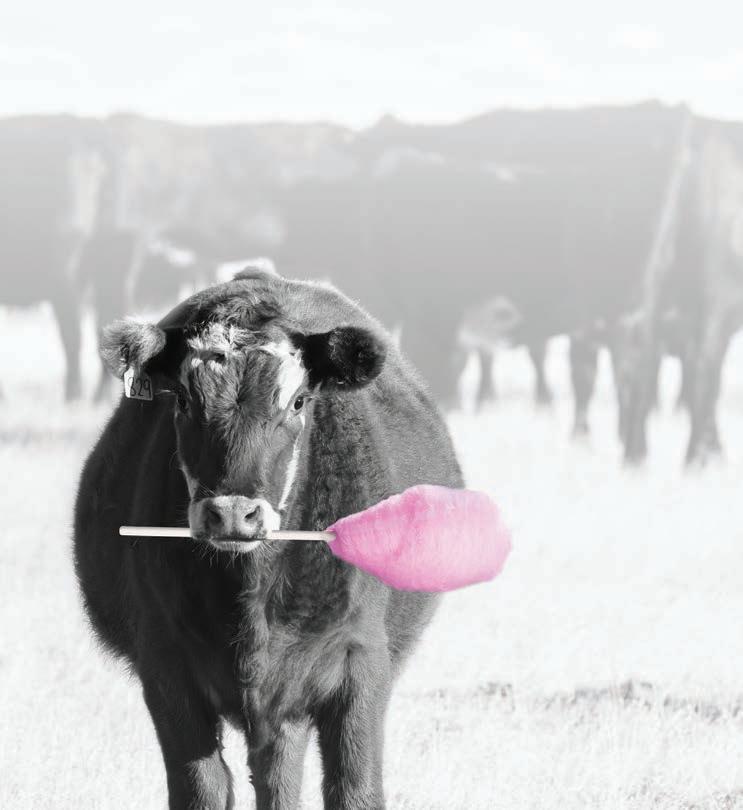

866.318.3116 | vetericyn.com | Made in the USA
COW COUNTRY NEWS PUBLICATION SPECIAL!
MANUFACTURER’S COUPON
$5.00 OFF
EXPIRES: OCTOBER 31, 2020
Any ONE (1) Vetericyn ® Antimicrobial Pink Eye Spray
Consumer and Retailer: LIMIT ONE (1) COUPON PER PURCHASE OF SPECIFIED PRODUCT AND QUANTITY STATED. NOT TO BE COMBINED WITH ANY OTHER COUPON(S). LIMIT OF TWO (2) IDENTICAL COUPONS IN SAME SHOPPING TRIP. Void if expired, reproduced, altered, copied, sold, purchased, transferred, or exchanged to any person, firm, or group prior to store redemption, or where prohibited or restricted by law. Any other use constitutes fraud. Consumer: You pay any sales tax. Retailer: Innovacyn will reimburse you for the face value of this coupon plus 8¢ handling if submitted in accordance with Innovacyn Coupon Redemption Policy (available upon request). Mail coupons to: Inmar Dept #18582, Innovacyn, 1 Fawcett Drive, Del Rio, TX 78840. Cash value 1/100¢. No cash back if coupon value exceeds selling price. Valid only in the USA.
COVID-19 AND FOOD PRICE INFLATION
Will Snell, Extension Professor
The media has provided a lot of news stories of late on the impact of COVID-19 on the prices we are paying for food. A major disruption in our food supply chain coupled with an initial surge of panic buying by consumers would suggest that food prices would increase. But how much extra are we paying to feed our families? One consumer interviewed on the national news recently estimated that the “price of food had probably increased 20 to 30% during this pandemic.” Another report claimed that recent events have led to “the biggest food price increase is more than 50 years.” Official data does indicate that food prices have increased, but likely well below what most people would predict. Earlier today (June 26, 2020), USDA The Coronavirus has had major impacts to the beef supply, as well as other meats in this country since mid-March. Shortterm demand for beef has increased, but major bottlenecks in processing have limited supply and have generally had negative impacts on the conventional beef industry. Unlike the conventional beef segment, Kentucky beef producers who process and market their own meats locally have seen mostly positive changes. The rest of this article describes these changes, helps cattle farmers determine ifsellinglocallyfinishedbeefmightwork for them, and looks at possible long-term changes related to locally supplied beef.
Current Situation for Local Beef Suppliers:
The coronavirus and the fear of potential food shortages created opportunities for locally finished beef. The main driving force has been increased demand. Part of this increase is due to the short-term released their monthly Food Price Outlook which revealed food prices for U.S. consumers increased 0.6% in May, following a 1.5% increase in April. These are relatively high individual monthly price changes, but food prices for 2020 remain comparable to food price changes over the past two decades. Meat prices have fueled most of the food price inflation this year, up nearly 10% for the year led by higher egg (+8.0%) and beef prices (+ 6.7%). However, prices for other food items such as fruits and vegetables have remained fairly stable. A major reason for the spike in meat prices over the past couple of months can be attributed to processing plant disruptions evolving from the Coronavirus. However, supply disruption in the conventional beef industry due to processing bottlenecks, and short-term hoarding by customers: less conventional-produced beef was available and consumers looked to alternative sources. However, a large part of this is also likely due to people wanting to have a more intimate connection to their food: knowing where their beef comes from and knowing that a supply disruption at the national-level willnotaffectthem. Debbie Apple at River Cottage Farm in Rockfield Kentucky (northwest of Bowling Green) began to see demand increase in the second week of March when their sales doubled. Sales doubled again by the third week in March and stayed near that level until the fourth week of May. Sales slowly decreased over the next two weeks but have settled at double their normal sales. Debbie believes most of her new customers are people who have always wanted to most of these plants are back running at near full capacity. Assuming future plant closures do not occur, look for food prices to moderate in the coming months as the supply system continues to adjust to protections put in place to minimize COVID-19 impacts. For the year, food prices are up 2.3%, which is actually the average annual price increase over the past twenty years and much lower than what consumers experienced prior to the 1990sasconsumershavebenefittedfrom competition and efficiency gains within the retail food price space. For the year, USDA is projecting annual food price inflationto beinthe2 to 3% range. The degree offood price inflation varies purchase locally and organic-ish type meat butfordifferentreasonsneverquite made the commitment. She believes most were previously purchasing their meats from places like Whole Foods and Trader Joes.
List of Beef Cuts and Prices
Debbie and her son Braiden sell mostly by the piece and in bundles, so generally have a large meat supply on hand to sell year-round. Suppliers like River Cottage Farm rely on a large capacity of freezer space to be able to supply yearround. Many other producers however, sell mostly in bulk by the quarters or halves of the animals they process. This is typically referred to as “freezer beef”. They market most, if not all, of their beef when the animals are processed. Unless these producers were lucky enough to have animals ready to take to the processor in early spring, they probably have not been able to take depending if the food was purchased for consumption at home (primarily grocery stores) or for consumption away from home (primarily restaurants). Price for food purchased for home preparation increased 0.8% from April to May 2020 and was 4.8% higher than May 2019. Prices for food purchased away-fromhome increased 0.4% in May and was 2.9% higher than May 2019. One final point has to deal with the weighting of the food price index which currently has food away from home accounting for 45% of the index --- way too high for the current dining out environment and thus tends to underestimate the price surge felt by today’s consumers eating most of their
LOCALLY PRODUCED BEEF AND THE IMPACTS OF CORONAVIRUS
Greg Halich, Associate Extension Professor
meals at home.
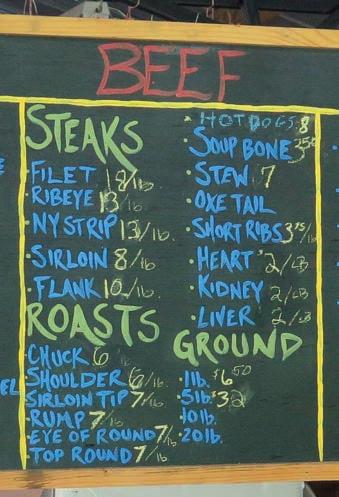
advantage of the increase in consumer demand. As an example, I (along with
my colleague Kenny Burdine) finish around 20 steers per year on pasture in southern Woodford County, but all these steers are either marketed as freezer beef (sold in quarters, halves, and wholes), or sold wholesale to a partner who markets underhisbrand. Ourfirstsetofsteersfor this year went to the processor on June 24th, well after the surge in increased demand occurred. Josh and Melissa Ballard at Bluegrass Beef in Shelbyville Kentucky (east of Louisville) alsosawasignificantincrease in demand. They had approximately three steers worth of beef in the freezer that they were originally holding for the beginning of the farmers market in the spring but due to increased demand, sold all of it one week in March. They quickly sold everything else they had in stock and had to wait until April when they had additional steers scheduled for processing. Their year to date sales have increased over $20,000. On the other hand, direct marketers who sell mostly to restaurants have been hurt by the Coronavirus. Joe Weber, also known as “Farmer Joe” of Salvisa Kentucky (southwest of Lexington) supplies a number of restaurants in the Lexington and Louisville markets and sales at these establishments dried up overnight in March. He also supplies a small local University with beef and when in-person classes were cancelled, so were his beef orders for the rest of the semester. Ontheflipside,healsosupplies local grocery stores and direct markets to individuals. Luckily these sales have increased dramatically, similar to River Cottage Farm and Bluegrass Beef. Thus the impacts of the Coronavirus vary quite a bit by marketing method. Processing Bottleneck:While in general, demand hasincreasedsignificantlyinthe last few months for locally produced beef, a processing bottleneck has prevented many Kentucky farmers from taking advantage of this increased demand.
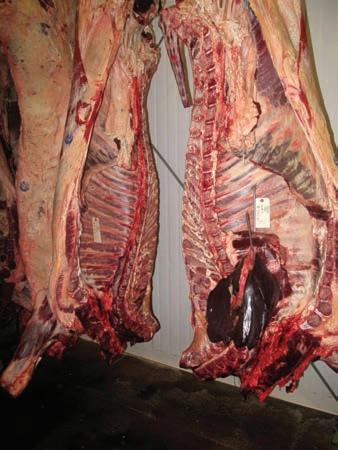
There are two main reasons for this processing bottleneck: 1) More farmers wanting to process animals due to the increased demand, and 2) Operational slow-downs at the processing facilities due to social distancing and workerrelated problems. Current local beef suppliers are trying to schedule earlier harvests than they originally planned to take advantage of the consumer surge in demand. In addition, many conventional beef producers who would typically not process animals are trying to get into the locally finishedbeefsegmentto also take advantage of the increase in demand. Many from this group are using cullcows to do this. More producers trying to schedule beef processing would by itself lead to longer lead-times to get animals processed. However, that combined with the operational slow-downs has led to a dramatic increase in processing leadtimes. Most of the reports in Kentucky for USDA inspected establishments are a minimum of 6-10 months to schedule a processing appointment. I have heard of farmers who had appointments that were cancelled or pushed back by their processors, in some cases because processors were trying to fill increased demand in their retail shops. In addition, some processors are offering fewer processing options so that they can process animals quicker. When will processing get back to normal? Therearemanydifferentthoughtsonthis but I would say best-case scenario will be the summer of 2021. I hope I am wrong on this, but producers need to have contingency plans in place for continued problems in scheduling processing.
Considerations Before Selling Finished Beef: Finishing Steers in Southern Woodford County, KY
Many conventional producers are trying to enter the locallyfinished beefmarket. However, there are quite a few of these producers that probably haven’t thought through two important issues: 1) Will I actually makeaprofit?2)Willmycurrent farm insurance policy cover this? Most people I have talked to are being overly optimistic that this will work for them, even with cull-cows that they will not have an additional finishing period. Many of these folks have no idea how much extra time it will take dealing with processing and dealing with customers. They do not consider all the potential problems that might occur such as packages that are not sealed correctly, customers who back out at the last minute, and customers who do not pay. Selling calves at the stockyards is a one-and-done transaction. Not so with selling finished beef. My best advice is to start small to find out what you are actually getting yourself into. Those that are going to finish-out growing stock need to consider the extra time and expenses of doing this, as well as the significant change in management that will be necessary to do this well. The following publication will help producers getting started on the production side of producing finished beef: http://www2. ca.uky.edu/agcomm/pubs/ID/ID224/ ID224.pdf The following worksheet will help people think through all their costs and help estimate their potential profit: http://agecon.ca.uky.edu/files/ beefpasturefinishing.xlsx One of the biggest mistakes I see wouldbe producers make is to assume their current farm insurance policy will cover themiftheysellfinishedbeef. Mostfarm insurance policies do not cover what is considered a “processed product”, packaged beef being one of those. If you are processing the animal and selling it afterwards, you will likely not be covered by your base insurance policy. To get around this, many producers sell a “portion” of an animal before processing. There is a fair amount of grey area surrounding these distinctions, and you should contact your insurance agent to make sure you will be covered if you are considering this.
Long-Term Changes:
Most of the local-beef producers I have spoken to believe that much of the increase in consumer demand will be short-term phenomena. However, most also believe that there will be a fair amount of long-term increased demand. River Cottage Farm, Bluegrass Beef, and Farmer Joe all believe some of their new customers will become permanent longterm customers. The virus has likely spooked some people into wanting to have freezer full of meat rather than living hand-to-mouth with the grocery store. My guess is most of the new producers who are taking up processing capacity will only be in this for the shortrun. Finishing cattle is a long-term commitment. Pasture finishing typically requires around 1.5 years after weening, and the short-term impacts from the Coronavirus will hopefully be over far before that time-period is up.
The Agricultural Economics Department publishes the Economic and Policy Update towards the end of each month. Each issue features articles written by extension personnel within the department and other experts across the country.

Topics will vary greatly but regularly include marketing, management, policy, natural resources, and rural development issues. If you would like to recieve this newsletter by email, please contact Kenny Burdine at kburdine@uky.edu. You can also view current and past issues online at https://bit.ly/2PoHsZj Co-editors: Kenny Burdine, Alison Davis, and Greg Halich

